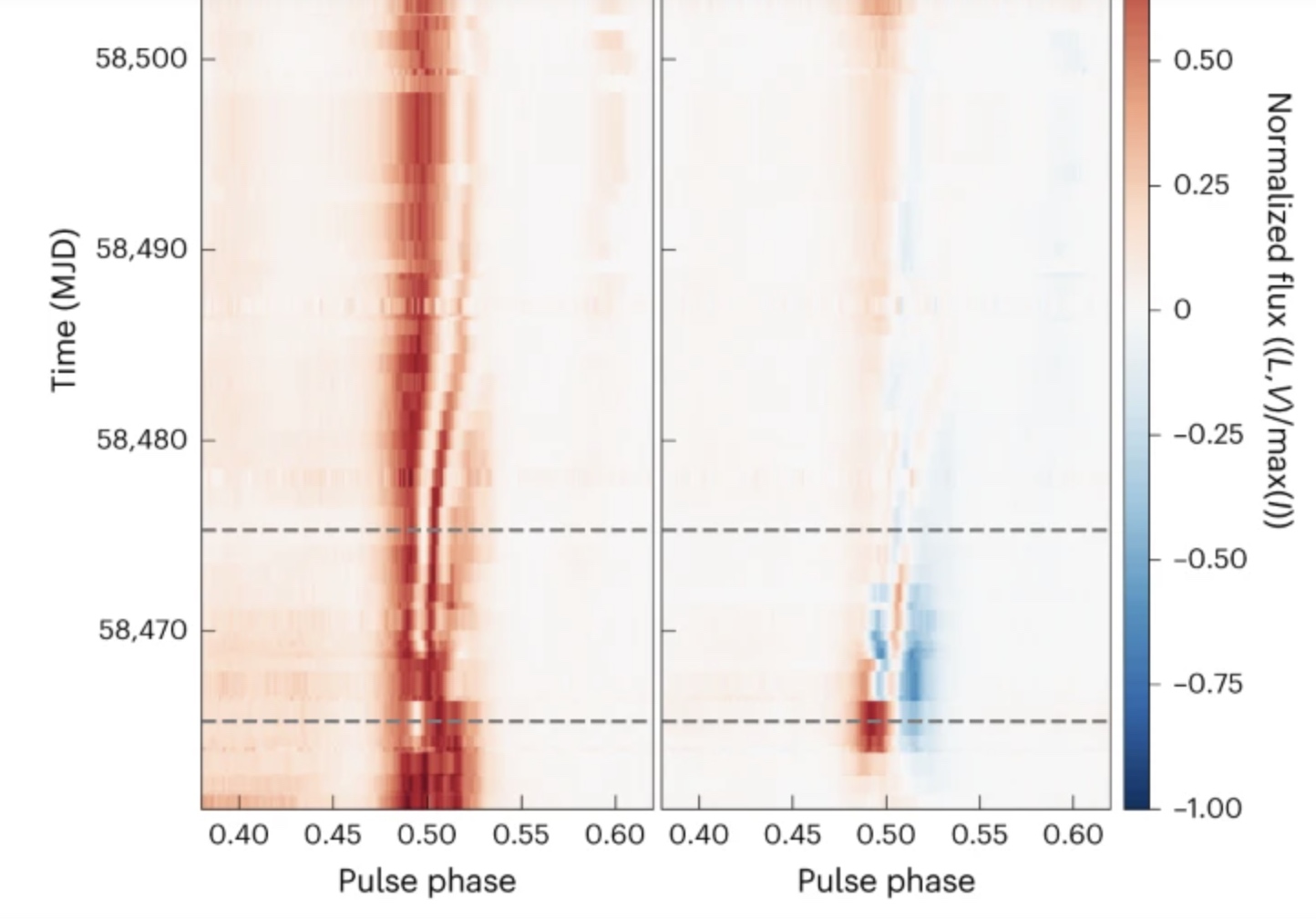| 22nd of April 2024 |
|---|
 |
| Linear to circular conversion in the polarized radio emission of a magnetar |
| by Lower et al. |
|
Magnetars are a class of slowly rotating neutron star with
extremely high surface magnetic field strengths. Most magnetars are
exclusively detected at X-ray and gamma-ray wavelengths.
To date, only six have been found to emit radio pulses. The magnetar XTE
J1810−197 was initially discovered following a high-energy outburst in
2003 with a peculiar flat-spectrum radio
counterpart. Follow-up observations revealed the magnetar emitted
bright, highly polarized radio pulses.
After more than a decade of quiescence, radio pulses were again
detected from XTE J1810−197 in December 2018 following a high-energy outburst
several weeks earlier.
Lower et al. report the
frequency-dependent conversions between linear to circularly polarized
radiation detected in 0.7–4 GHz observations of the
magnetar following its 2018 outburst.
The phenomenon is restricted to a narrow range of pulse phase centred
around the magnetic meridian. Its temporal evolution is closely
coupled to large-scale variations in magnetic topology that originate
from either plastic motion of an active region on the magnetar surface
or free precession of the neutron star crust.
The authors discuss potential links between the immediate
magneto-ionic environments of magnetars and those of fast radio burst
progenitors.
The figure above shows linear (left) and circular (right) polarized emission at 1.5 Ghz detected by the Lovell and Murriyang Parkes telescopes observed at each epoch after averaging in frequency and time. These data are presented as functions of pulse phase (on the x-axis) and time (on the y-axis). Red and blue colours correspond to positive and negative values, respectively. The initial smooth linear variations across pulse phase and slowly increasing level of positive (left-handed) circular polarization undergo a dramatic change after 13 December 2018 (MJD 58465, lower horizontal line). Sudden reversals in circular handedness correspond to dips in linear intensity due to strong conversion effects. The circular intensity diminishes within roughly 12 days of the 13 December 2018 event (MJD 58477, upper horizontal line). It was then followed by an apparent drift of the linear-to-circular conversion feature to increasingly later phases with time. |